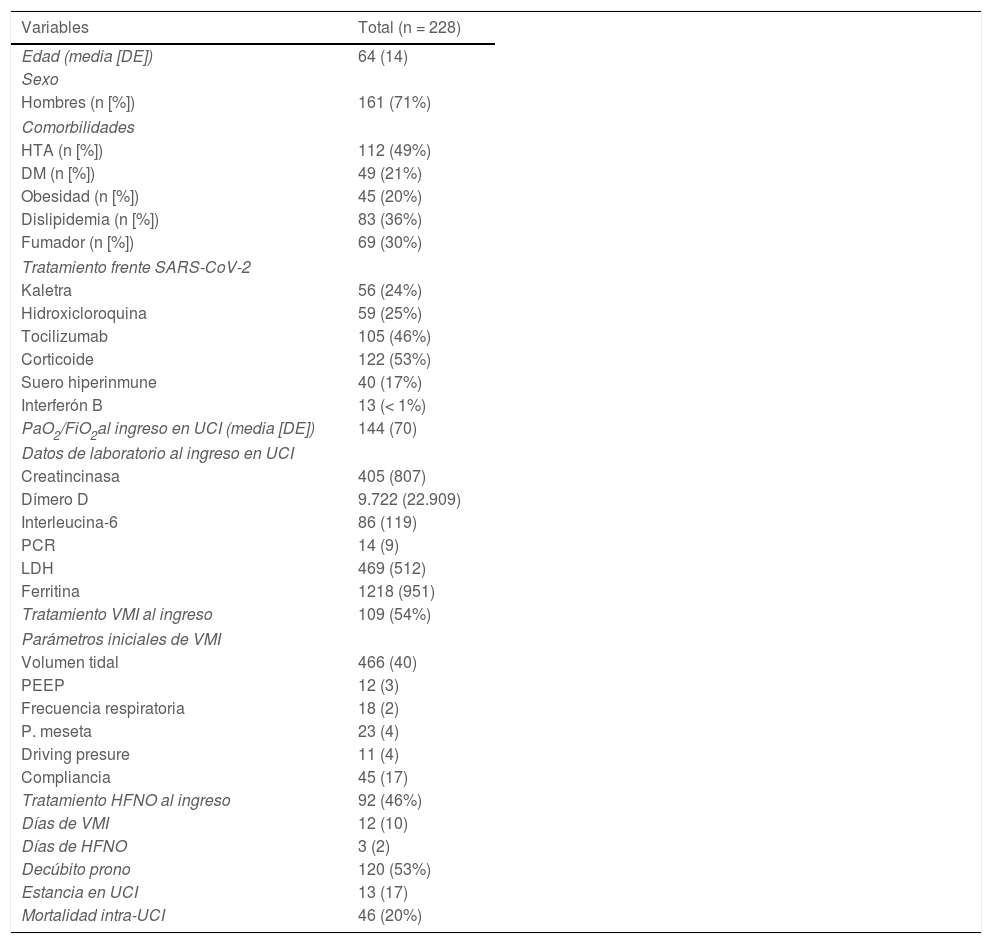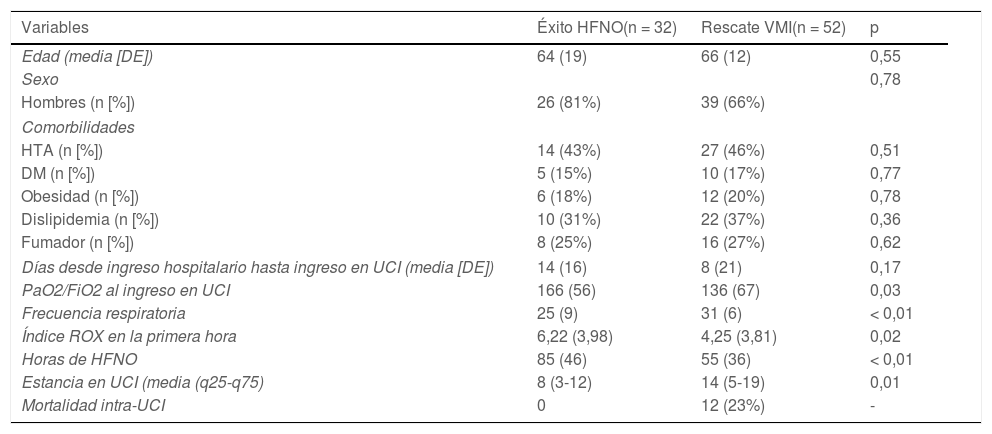Las cánulas nasales de alto flujo de oxígeno en pacientes con insuficiencia respiratoria secundaria a neumonía por SARS-CoV-2 no han sido estudiadas desde un punto de vista coste-efectividad.
MétodosAnálisis retrospectivo de datos obtenidos de enfermos ingresados en área-COVID de un servicio de Medicina Intensiva en un hospital de referencia de tercer nivel, entre marzo y diciembre del 2020. Se efectuó un análisis de coste efectividad en el que se comparan 2decisiones terapéuticas: la estrategia experimental se definió como una estrategia mixta consistente en la aplicación inicial de oxígeno nasal de alto flujo (HFNO) y aplicación de ventilación no invasiva solo a los fracasos del HFNO. El objetivo del estudio fue establecer cuál de las 2alternativas se presentaba como la decisión racional óptima y la de mejor eficiencia económica (razón de coste-efectividad incremental [RCEI] por años de vida ganados).
ResultadosEn el análisis de coste-efectividad, comparando ambas estrategias terapéuticas, la probabilidad de que fuese más efectiva la estrategia experimental fue de 0,974, alcanzando la significación estadística: diferencia de proporciones media=–0,113; IC del 95%=–0,018 a –0,208. Ello corresponde a un número de pacientes que es necesario tratar de 9 pacientes. La decisión óptima fue la estrategia de HFNO seguida de ventilación mecánica invasiva en los fracasos del HFNO. Esta opción tuvo una RCEI de coste-efectividad incremental de 5.582 euros por año de vida ganado.
ConclusionesResulta importante establecer en el futuro marcadores fiables en el empleo del HFNO para que dicha terapia mejore sus prestaciones coste-efectivas.
high-oxygen nasal cannulas in patients with respiratory failure secondary to SARS-CoV-2 pneumonia have not been studied from a cost-effectiveness point of view.
MethodsRetrospective analysis of patients who had entered the COVID-area of an intensive medicine service in a third reference hospital, between March-December 2020. An effectiveness cost analysis was carried out comparing 2therapeutic decisions: the experimental strategy was defined as a mixed strategy consisting of the initial application of high flow nasal oxygen (HFNO) and application of VMI only to HFNO failures. The optimal rational decision was defined as maximizing expected profit, and economic efficiency was assessed by calculating the Incremental Cost-Effectiveness Ratio (ICER) for years of life gained.
ResultsOf the 185 patients tested, 101 (55%) received invasive mechanical ventilation immediately and 84 (45%) were treated with HFNO at the outset. In the cost-effectiveness analysis, comparing both therapeutic strategies, the probability that the experimental strategy would be more effective was 0.974, reaching statistical significance: Difference in average proportions -0.113; 95% CI:-0.018 to -0.208. This corresponds to an NNT of 9 patients. The optimal decision was HFNO's strategy followed by VMI in HFNO failures. This option had an RCEI of 5582 euros per year of life gained.
ConclusionsIt is important to establish in the future reliable markers in the use of HFNO so that this therapy improves its cost-effective benefits.










